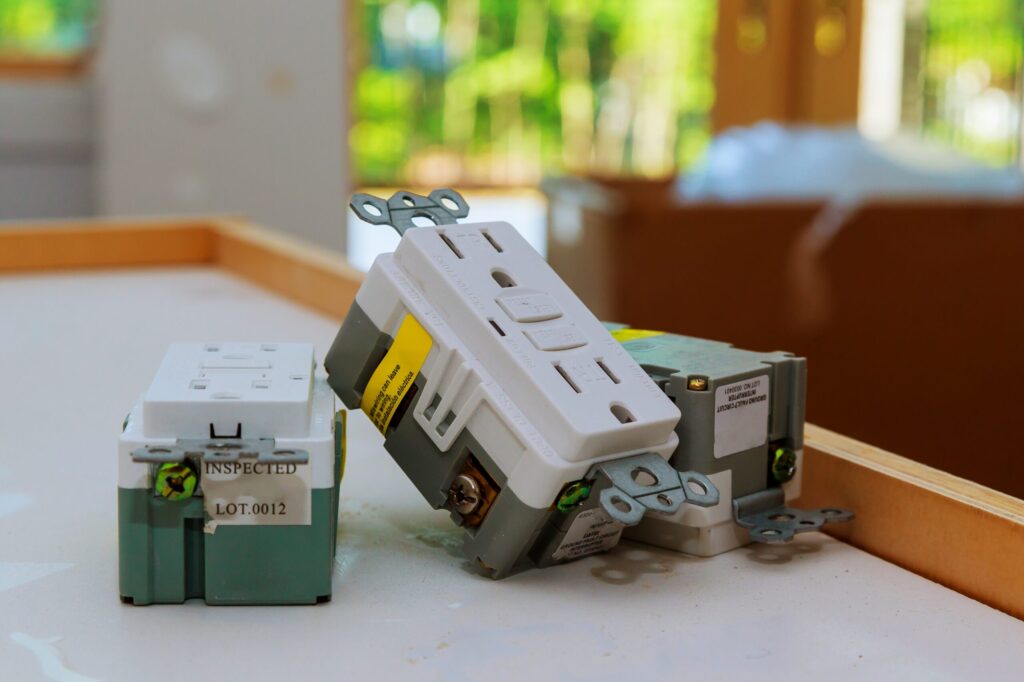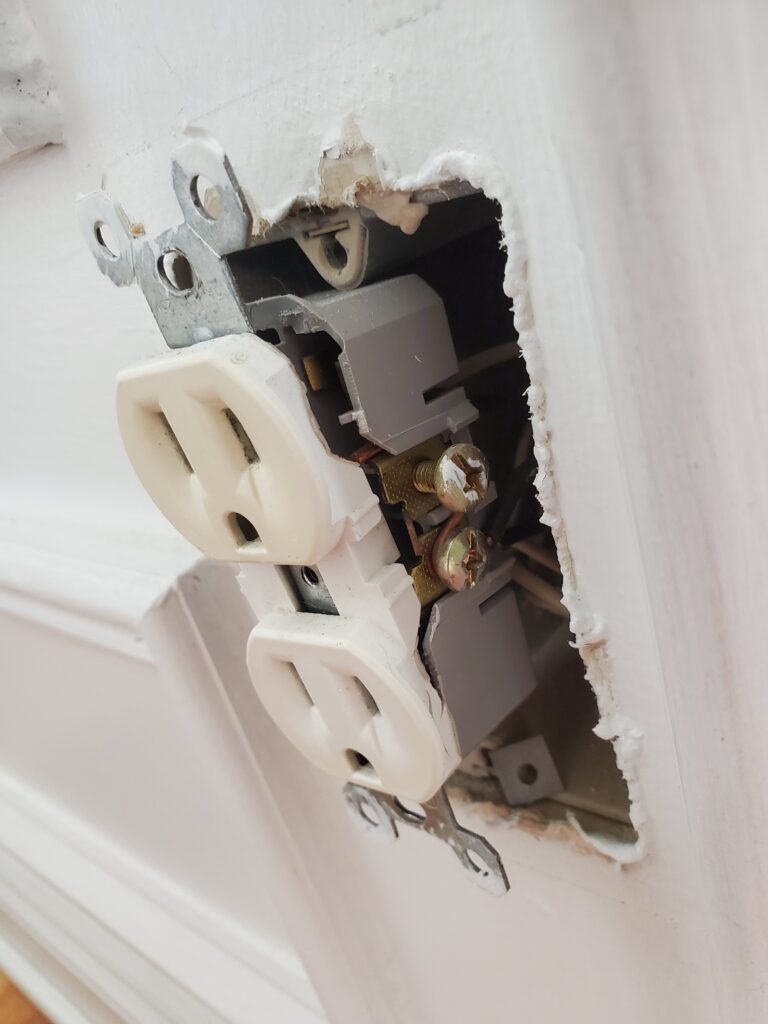How to Test a GFCI Outlet
Home safety relies on numerous systems working together, many of which operate unseen. Among the most critical of these are your home’s electrical safety devices. While circuit breakers in your main panel protect your home’s wiring from overloads and fires, a different device protects you, your family, and your guests from electrical shock. This device is the Ground Fault Circuit Interrupter, or GFCI. It is a specialized type of outlet designed for one purpose: to prevent electrocution. These outlets are a modern standard, required in any area where electricity and water might come into contact.
Recognizing a GFCI outlet is simple; it is the receptacle with the two small buttons, “TEST” and “RESET,” located between the plug slots. These buttons are not just for show; they are the key to ensuring the outlet’s life saving mechanism is functional. GFCIs are sophisticated electronic devices. Like any piece of electronics, they are subject to wear, damage, and failure over time. A GFCI that no longer works provides a false sense of security, operating as a standard outlet without any protective features. This is why understanding how to test them is not just a piece of technical trivia; it is a fundamental part of home maintenance that every homeowner should know.
What a Ground Fault Circuit Interrupter Does
A Ground Fault Circuit Interrupter is engineered to do something a standard circuit breaker cannot. Its function is to monitor the flow of electricity through a circuit with extreme precision. In a properly functioning circuit, the amount of electrical current flowing to an appliance on the “hot” wire should be exactly equal to the current flowing back on the “neutral” wire. The GFCI’s internal sensor constantly measures this balance.
A “ground fault” occurs when this balance is broken. It means some of the electrical current has found an alternative, unintended path to the ground. This unintended path could be through a pool of water, a damp floor, or the frame of a faulty appliance. In the most dangerous scenario, that path to ground is through a human body. This is what causes a severe or fatal electrical shock.

The GFCI is designed to detect a minuscule leak in current, as small as 4 or 6 milliamperes. This is a tiny amount of electricity, far too small to trip a regular circuit breaker, but it is more than enough to cause muscle paralysis and stop a heart. When the GFCI detects this tiny imbalance, it trips the circuit instantly. In as little as 1/40th of a second, it cuts off the flow of electricity to that outlet and any other outlets connected to it. This rapid response is faster than a person can be fatally shocked, making the GFCI a true life saving device.
This is the key difference between a GFCI and a circuit breaker. A circuit breaker protects the building’s wiring. It trips when a circuit draws too much power, like 15 or 20 amps, which could cause the wires in the wall to overheat and start a fire. A GFCI protects people. It trips at a tiny fraction of an amp, sensing a current leak that poses a direct threat to human life.
Why Regular Testing is a Critical Safety Habit
A GFCI outlet is an active, electronic device. It is not a simple mechanical switch. It contains sensitive circuitry that is always on, always monitoring the electrical flow. Because it is an electronic component, it is vulnerable to failure. Over time, components can degrade. Exposure to moisture, a common factor in the areas GFCIs are installed, can lead to corrosion. Power surges, such as those from a nearby lightning strike or fluctuations from the utility grid, can instantly fry the delicate internal sensors, rendering the outlet useless.
Is your outlet harming your electronics? Click here for our electrical grounding service.
When a GFCI fails, it usually does so “open,” meaning it simply stops providing power. In some dangerous cases, however, it can fail “closed.” This means the outlet still provides electricity, but the protective monitoring circuit is no longer working. The “TEST” and “RESET” buttons may do nothing. The outlet appears to be fine, but it offers zero protection against a ground fault. This is the worst case scenario, as it gives a homeowner a completely false sense of security.
Regular testing is the only way to verify that the outlet’s protective feature is still operational. It is a simple check that confirms the internal switch is capable of tripping and cutting power when it is supposed to. Manufacturers, safety organizations, and licensed electricians all recommend testing your GFCI outlets at least once a month. It is a small investment of time that provides immense peace of mind. Making this test a regular part of your home maintenance routine, like changing your air filter or checking smoke detector batteries, ensures your home’s electrical safety net remains intact.
Identifying GFCI Locations in Your Home
The National Electrical Code (NEC) mandates where GFCI outlets must be installed in all new construction and major renovations. These rules are based on decades of safety data, and they all center on one theme: installing protection in areas with an increased risk of electrical shock, primarily locations near water.
The most obvious place is the bathroom. Every receptacle in a bathroom must have GFCI protection. This includes outlets for hair dryers, electric shavers, and curling irons, all of which are frequently used near sinks and wet surfaces.

Kitchens are another critical area. All receptacles serving countertop surfaces are required to be GFCI protected. This covers outlets for toasters, blenders, coffee makers, and mixers. The proximity to sinks and the possibility of spilled liquids make this protection essential.
Garages and accessory buildings, such as storage sheds, also require GFCI protection for all standard 120 volt outlets. Floors in these areas are often concrete, which can be damp, and they are common locations for using power tools. Unfinished basements and crawl spaces also fall under this rule, as these areas are prone to moisture and are not considered finished living spaces.
Exterior outlets are another key location. Any receptacle on the outside of your home, whether on a porch, deck, or near a garden, must be GFCI protected. These outlets are directly exposed to rain, snow, and humidity. This requirement also extends to any outlets near swimming pools, hot tubs, or other water features, where the risk of electrocution is extremely high. Laundry areas, especially those with utility sinks, are also often required to have GFCI protected outlets. If your home is older, it may not have GFCIs in all these locations. Upgrading these outlets is one of the most significant safety improvements you can make.
How to Test Your GFCI Outlet Manually
Testing a GFCI outlet is a straightforward process that does not require any special tools. It takes less than a minute and should be performed on every GFCI in your home.
First, plug a simple electrical device into the outlet. A nightlight, a small lamp, or a radio is perfect for this. Turn the device on and confirm that it has power. This device will serve as your visual indicator that the test is working.
Next, locate the “TEST” button on the face of the outlet. It is the smaller of the two buttons, often colored black or red. Firmly press the “TEST” button. You should hear a distinct, sharp “click” sound as the internal switch is tripped. The lamp or nightlight you plugged in should turn off instantly. This confirms that the GFCI has successfully interrupted the flow of power. The “RESET” button, which is usually the same color as the outlet, may pop out.
Do any outlets in your home seem worn? Click here to learn about electrical inspection.
If the lamp turns off, the test was successful. The GFCI’s protective mechanism is working. To restore power to the outlet, firmly press the “RESET” button. You should hear another “click,” and the lamp or nightlight should turn back on. You have now confirmed your GFCI is functioning properly.
If you press the “TEST” button and the light stays on, the GFCI has failed. It is not providing any protection and must be replaced immediately. If you press the “RESET” button and it does not stay in, or if it does nothing, this could also indicate a problem.
Using a GFCI Outlet Tester for a More Thorough Check
For a more comprehensive and certain test, you can use an inexpensive tool called a GFCI outlet tester. This small device plugs directly into the outlet and provides two key functions. First, it uses a series of three indicator lights to show if the outlet is wired correctly. Second, it has its own “TEST” button that simulates a ground fault.
When you plug the tester in, the combination of lights will tell you the outlet’s wiring status. A chart on the tester itself explains the light codes. The “correct” code, usually two amber lights, confirms that the hot, neutral, and ground wires are all properly connected. Other combinations can indicate serious problems, such as an “open ground” (meaning the safety ground wire is missing or disconnected) or “hot/neutral reversed” (a dangerous miswiring error). If the tester shows a wiring fault, you should stop immediately and call an electrician, as this is a problem a new GFCI cannot fix.
If the wiring is correct, you can proceed with the test. Press the small “TEST” button on the tester itself. This button causes a small, safe ground fault. This action should immediately trip the GFCI outlet. You will hear the same “click,” and the lights on the tester will go out. This confirms the GFCI is working. You can then press the “RESET” button on the outlet to restore power.
Using a dedicated tester is considered a more reliable method than using the outlet’s built in “TEST” button. The outlet’s button performs an internal mechanical test, but the plug in tester creates an actual ground fault, providing a real world simulation of a dangerous event.
Understanding Downstream Protection: Line and Load
One of the most confusing parts of GFCI operation for homeowners is “downstream protection.” You may have a regular looking outlet in your bathroom that has no test buttons, but it is still GFCI protected. This is possible because a single GFCI outlet can be wired to protect other standard outlets “downstream” from it.

On the back of a GFCI outlet, there are two sets of screw terminals. One set is labeled “LINE,” and the other is labeled “LOAD.” The “LINE” terminals are for the incoming power wires from the circuit breaker panel. The “LOAD” terminals are for wiring that runs out from the GFCI to other devices.
When wired correctly, any standard receptacle connected to the “LOAD” terminals of a GFCI receives the exact same protection as the GFCI outlet itself. If a ground fault occurs at that downstream outlet, the upstream GFCI will detect the imbalance and trip, cutting power to itself and all the outlets connected to its “LOAD” side. This is a common and code compliant way to protect an entire bathroom circuit; the GFCI is the first outlet in the chain, and all other outlets and sometimes even the light fixture are protected by it.
This also explains a common troubleshooting scenario. You may find an outlet in your home is dead. You check the breaker panel, and nothing is tripped. The solution might be to find a GFCI outlet in a nearby location, such as another bathroom or in the garage, that has tripped. That tripped GFCI may be the upstream protector for the dead outlet.
Troubleshooting: What to Do When a Test Fails
When a GFCI test fails, you must determine the cause. If you press the “TEST” button and the light stays on, the GFCI mechanism is broken. The outlet is faulty, provides no protection, and must be replaced. This is a serious safety hazard.
If the “RESET” button will not stay in, there are a few possibilities. First, there might be no power coming to the outlet at all. A GFCI cannot be reset if it does not have power. Go to your main electrical panel and check if the corresponding circuit breaker has been tripped. If it has, reset the breaker, then try to reset the GFCI.
If the breaker is not tripped, the “RESET” button may not be engaging because the GFCI is faulty and needs replacement. However, it is also possible that the GFCI is doing its job. It may not be resetting because there is an actual ground fault happening somewhere in the circuit. This could be in a faulty appliance plugged into that outlet or in one of the downstream outlets it protects. Unplug everything from the GFCI and all downstream outlets. Try to reset it again. If it resets, plug items back in one by one until it trips. The item that causes the trip is faulty and should be repaired or discarded.
If the “RESET” button will not stay in even with everything unplugged, it indicates a fault in the wiring or the GFCI itself. If a plug in tester reveals a wiring fault like “open ground” or “reversed polarity,” this is a sign of a fundamental installation error. These are not simple DIY fixes.
When You Must Call a Professional Electrician
While testing a GFCI is a simple task for any homeowner, diagnosing and fixing the problems you find is a job for a professional. Electrical work is dangerous. A simple mistake can lead to shock, fire, or property damage.
You should call a licensed electrician, like Whiting Electrical Services, in several situations. If any GFCI outlet in your home fails the test, it needs to be replaced. A professional can do this quickly and ensure the new outlet is wired correctly, checking both the line and load connections. If a GFCI outlet trips repeatedly and you cannot find the cause, an electrician can trace the circuit, find the source of the ground fault, and perform a safe repair.
If you use a GFCI tester and it reveals any wiring fault, such as an open ground, this is a critical safety issue that needs immediate professional attention. An open ground means the outlet’s primary safety path is missing. If you live in an older home, built before the 1970s, you may not have GFCIs in all the required locations. Hiring an electrician to upgrade your outlets in kitchens, baths, and outdoor areas is one of the most important investments you can make in your family’s safety. For residents in Greenville, NC, our team at Whiting Electrical Services can provide a full electrical safety inspection and install the GFCI protection you need.
The Ground Fault Circuit Interrupter is a small, sophisticated device that serves a vital role in your home’s electrical system. It stands as a silent guard, constantly monitoring for the tiny electrical leaks that can lead to fatal shocks. But like any guard, it must be checked to ensure it is still on duty. Testing your GFCIs monthly is a simple, 60 second habit that verifies this life saving protection is operational. Using a plug in tester can provide an even greater level of assurance.
Do not let a false sense of security put your family at risk. Take the time to find and test every GFCI in your home. If you find an outlet that fails, if a reset button will not engage, or if you have an older home that lacks this protection in critical areas, do not wait. Contact a qualified and trusted professional. For any electrical repairs or upgrades in the Greenville area, Whiting Electrical Services is ready to help ensure your home is safe, secure, and up to code.



